To be sure, ESPN doesn’t always go about things perfectly (see Tilt). With 30 for 30, they nailed it. The brainchild of “Sportsguy” Bill Simmons, the 30 for 30 series embarked on the tremendously ambitious undertaking of compiling 30 diverse directors to tell 30 diverse stories spanning the ESPN era. Whether presenting often overlooked stories like the saga of Marcus Dupree in ‘The Best that Never Was’ or offering up fresh perspectives on widely known events like the OJ chase in ‘ July 17, 1994’, 30 for 30 was a virtual crash course in a generation of sports history. Now in it’s eleventh year, here is how they stack up so far from ‘must see’ to ‘meh.’
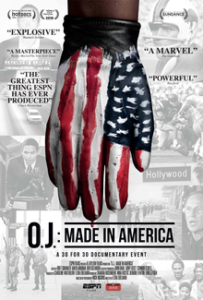 OJ: Made in America by Ezra Edelman: The five-part documentary series examines the life of O. J. Simpson, as well as the broader issues of race and celebrity in the United States as it pertained to Simpson’s 1995 criminal trial for the murders of his ex-wife, Nicole Brown Simpson, and her acquaintance, Ronald Lyle Goldman. Made in America also focuses on other aspects in Simpson’s life, including his success on the football field, his celebrity away from the gridiron, and his later conviction and imprisonment in a robbery case.
OJ: Made in America by Ezra Edelman: The five-part documentary series examines the life of O. J. Simpson, as well as the broader issues of race and celebrity in the United States as it pertained to Simpson’s 1995 criminal trial for the murders of his ex-wife, Nicole Brown Simpson, and her acquaintance, Ronald Lyle Goldman. Made in America also focuses on other aspects in Simpson’s life, including his success on the football field, his celebrity away from the gridiron, and his later conviction and imprisonment in a robbery case.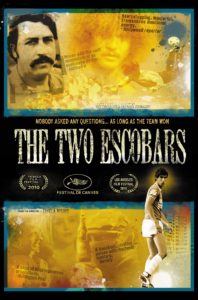 The Two Escobars by Jeff Zimbalist and Michael Zimbalist: The lives of soccer player Andrés Escobar and drug lord Pablo Escobar; the intertwining of crime and soccer in their native Colombia; and the connections between the murders of both men.
The Two Escobars by Jeff Zimbalist and Michael Zimbalist: The lives of soccer player Andrés Escobar and drug lord Pablo Escobar; the intertwining of crime and soccer in their native Colombia; and the connections between the murders of both men.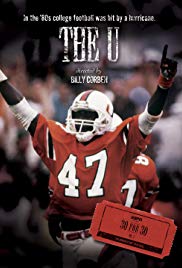 The U Parts I & II by Billy Corben: Part 1 chronicles the racial and cultural evolution of Miami during the 1980s as represented within the University of Miami football team. The sequel profiles the programs rise from scandal (and calls for the school to drop the sport) to a national championship, only to see new controversy after booster Nevin Shapiro is revealed to have given improper benefits to the program.
The U Parts I & II by Billy Corben: Part 1 chronicles the racial and cultural evolution of Miami during the 1980s as represented within the University of Miami football team. The sequel profiles the programs rise from scandal (and calls for the school to drop the sport) to a national championship, only to see new controversy after booster Nevin Shapiro is revealed to have given improper benefits to the program. Once Brothers by NBA Entertainment: The story of Croatian Dražen Petrović and Serbian Vlade Divac, NBA players and Yugoslavian national teammates, and how upheaval in their homeland adversely and irretrievably affected their friendship.
Once Brothers by NBA Entertainment: The story of Croatian Dražen Petrović and Serbian Vlade Divac, NBA players and Yugoslavian national teammates, and how upheaval in their homeland adversely and irretrievably affected their friendship.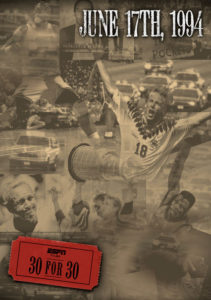 June 17, 1994 by Brett Morgen: Quick-cut archival montages capture the various sporting events on the day in question and the emotions they generated, with O. J. Simpson’s run from the police overshadowing an NBA Finals game between the New York Knicks and Houston Rockets, the opening of the U.S.-hosted 1994 World Cup, the last-ever U.S. Open PGA tournament round for Arnold Palmer, Ken Griffey Jr. hitting another home run to add to his record-setting pace, and a parade in New York after the Rangers finally won the Stanley Cup.
June 17, 1994 by Brett Morgen: Quick-cut archival montages capture the various sporting events on the day in question and the emotions they generated, with O. J. Simpson’s run from the police overshadowing an NBA Finals game between the New York Knicks and Houston Rockets, the opening of the U.S.-hosted 1994 World Cup, the last-ever U.S. Open PGA tournament round for Arnold Palmer, Ken Griffey Jr. hitting another home run to add to his record-setting pace, and a parade in New York after the Rangers finally won the Stanley Cup.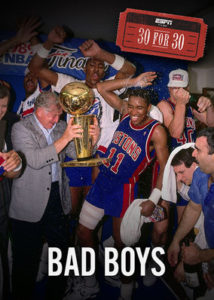 Bad Boys by Zak Levitt: A look back at the Detroit Pistons of the late 1980s and early 1990s.
Bad Boys by Zak Levitt: A look back at the Detroit Pistons of the late 1980s and early 1990s.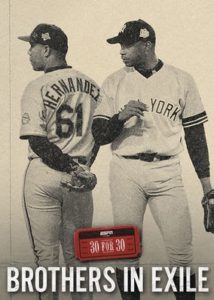 Brothers in Exile by Mario Diaz and MLB Productions. The story of Liván and Orlando Hernández, half-brothers who fled Cuba separately and became successful major-league pitchers.
Brothers in Exile by Mario Diaz and MLB Productions. The story of Liván and Orlando Hernández, half-brothers who fled Cuba separately and became successful major-league pitchers. The Best That Never Was by Jonathan Hock: The 1981 recruiting of high school football player Marcus Dupree by multiple big-time college programs, his resulting career, and how his recruitment changed the recruiting process.
The Best That Never Was by Jonathan Hock: The 1981 recruiting of high school football player Marcus Dupree by multiple big-time college programs, his resulting career, and how his recruitment changed the recruiting process.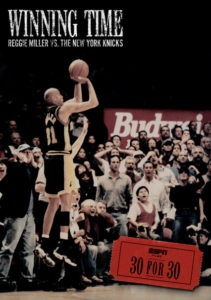 Winning Time: Reggie Miller vs. The New York Knicks by Dan Klores: The impact of Reggie Miller on the New York Knicks in the 1990s, specifically focusing on the 1995 NBA Playoffs and Miller’s interaction with Knicks fan Spike Lee.
Winning Time: Reggie Miller vs. The New York Knicks by Dan Klores: The impact of Reggie Miller on the New York Knicks in the 1990s, specifically focusing on the 1995 NBA Playoffs and Miller’s interaction with Knicks fan Spike Lee.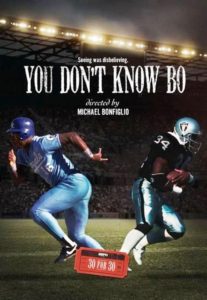 You Don’t Know Bo by Michael Bonfiglio: A profile of Bo Jackson and how his feats in two sports (baseball and football) captured the public’s imagination and made Jackson a cultural and marketing icon.
You Don’t Know Bo by Michael Bonfiglio: A profile of Bo Jackson and how his feats in two sports (baseball and football) captured the public’s imagination and made Jackson a cultural and marketing icon.
 The Fab Five by Jason Hehir: The story of the 1991 Michigan men’s basketball recruiting class, called the Fab Five, one of whom (Chris Webber) was later involved in a notorious pay-for-play scandal.
The Fab Five by Jason Hehir: The story of the 1991 Michigan men’s basketball recruiting class, called the Fab Five, one of whom (Chris Webber) was later involved in a notorious pay-for-play scandal. Catching Hell by Alex Gibney: The relationship between Chicago Cubs fans and Steve Bartman following Game 6 of the 2003 National League Championship Series.
Catching Hell by Alex Gibney: The relationship between Chicago Cubs fans and Steve Bartman following Game 6 of the 2003 National League Championship Series.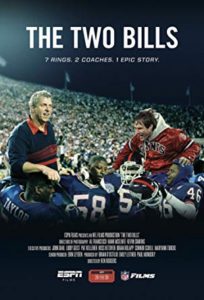 The Two Bills by Ken Rodgers: A look at the relationship between NFL coaches Bill Parcells and Bill Belichick.
The Two Bills by Ken Rodgers: A look at the relationship between NFL coaches Bill Parcells and Bill Belichick.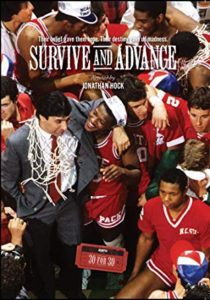 Survive and Advance by Jonathan Hock: A look at the 1982-83 NC State Wolfpack men’s basketball team’s successful and improbable championship runs through the ACC and the NCAA tournaments.
Survive and Advance by Jonathan Hock: A look at the 1982-83 NC State Wolfpack men’s basketball team’s successful and improbable championship runs through the ACC and the NCAA tournaments.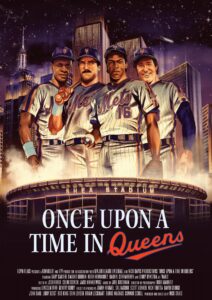 Once Upon a Time in Queens by Nick Davis: An in-depth examination of the 1986 New York Mets.
Once Upon a Time in Queens by Nick Davis: An in-depth examination of the 1986 New York Mets.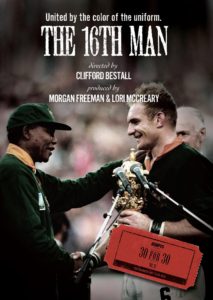 The 16th Man by Clifford Bestall, Lori McCreary, and Morgan Freeman: How hosting (and winning) the 1995 Rugby World Cup and Nelson Mandela’s support of the Springboks national team affected post-apartheid South Africa.
The 16th Man by Clifford Bestall, Lori McCreary, and Morgan Freeman: How hosting (and winning) the 1995 Rugby World Cup and Nelson Mandela’s support of the Springboks national team affected post-apartheid South Africa.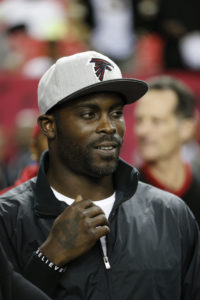 Vick by Stanley Nelson: The film provides a comprehensive look back at each chapter of former NFL quarterback Michael Vick’s saga: the incredible rise, shocking fall, and polarizing return.
Vick by Stanley Nelson: The film provides a comprehensive look back at each chapter of former NFL quarterback Michael Vick’s saga: the incredible rise, shocking fall, and polarizing return.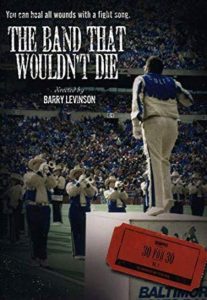 The Band that Wouldn’t Die by Barry Levinson: A profile of Baltimore’s love affair with football and the Colts, focusing on the Colts Marching Band. After the Colts decamped for Indianapolis in 1984, the band remained in Baltimore and helped promote the eventual return of the NFL to the city.
The Band that Wouldn’t Die by Barry Levinson: A profile of Baltimore’s love affair with football and the Colts, focusing on the Colts Marching Band. After the Colts decamped for Indianapolis in 1984, the band remained in Baltimore and helped promote the eventual return of the NFL to the city. Of Miracles and Men by Jonathan Hock: An exploration of the Miracle on Ice from the point of view of the defeated Soviet Union team.
Of Miracles and Men by Jonathan Hock: An exploration of the Miracle on Ice from the point of view of the defeated Soviet Union team. Fantastic Lies by Marina Zenovich: A 10-year retrospective of the Duke lacrosse case, in which a party thrown by members of the school’s men’s lacrosse team led to an accusation of rape — a claim that, though later proven to be false, ignited both a firestorm that damaged the school’s prestige and an investigation that ruined careers.
Fantastic Lies by Marina Zenovich: A 10-year retrospective of the Duke lacrosse case, in which a party thrown by members of the school’s men’s lacrosse team led to an accusation of rape — a claim that, though later proven to be false, ignited both a firestorm that damaged the school’s prestige and an investigation that ruined careers.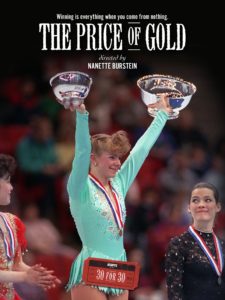 The Price of Gold by Nanette Burstein: A profile of a January 6, 1994 incident at the U.S. Figure Skating Championships, where an unknown attacker strikes entrant Nancy Kerrigan – an assailant that is later revealed to be a hit man hired by the ex-husband of Kerrigan’s rival, Tonya Harding, as part of a plan to prevent Kerrigan from competing in the 1994 Winter Olympics. The Price of Gold originally went by the title Tonya and Nancy during production.
The Price of Gold by Nanette Burstein: A profile of a January 6, 1994 incident at the U.S. Figure Skating Championships, where an unknown attacker strikes entrant Nancy Kerrigan – an assailant that is later revealed to be a hit man hired by the ex-husband of Kerrigan’s rival, Tonya Harding, as part of a plan to prevent Kerrigan from competing in the 1994 Winter Olympics. The Price of Gold originally went by the title Tonya and Nancy during production.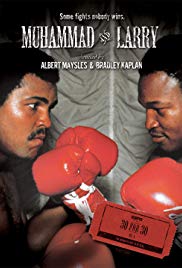 Muhammad and Larry by Albert Maysles: A look at the October 1980 Muhammad Ali-Larry Holmes fight and its impact on both fighters, featuring fresh interviews with participants and previously unseen lead-up footage from both fighters’ camps.
Muhammad and Larry by Albert Maysles: A look at the October 1980 Muhammad Ali-Larry Holmes fight and its impact on both fighters, featuring fresh interviews with participants and previously unseen lead-up footage from both fighters’ camps. Unguarded by Johnathan Hock: The story of Chris Herren, a high school basketball star who played in the NBA, struggled with drug abuse his entire career and ultimately, found redemption and personal fulfillment through the game.
Unguarded by Johnathan Hock: The story of Chris Herren, a high school basketball star who played in the NBA, struggled with drug abuse his entire career and ultimately, found redemption and personal fulfillment through the game.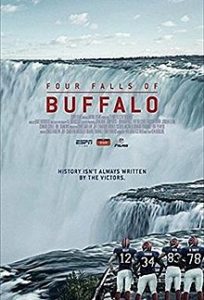 Four Falls of Buffalo by Ken Rodgers: A profile of the Buffalo Bills teams of the early 1990s, when the franchise became the first team to play in — and lose — four consecutive Super Bowls.
Four Falls of Buffalo by Ken Rodgers: A profile of the Buffalo Bills teams of the early 1990s, when the franchise became the first team to play in — and lose — four consecutive Super Bowls.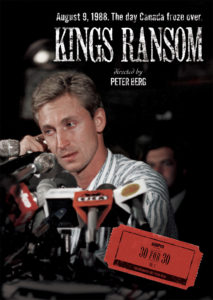 King’s Ransom by Peter Berg: The 1988 trade of Wayne Gretzky from the Edmonton Oilers to the Los Angeles Kings and the effect it had on Gretzky, the fans in Edmonton, and the popularity of hockey in Southern California.
King’s Ransom by Peter Berg: The 1988 trade of Wayne Gretzky from the Edmonton Oilers to the Los Angeles Kings and the effect it had on Gretzky, the fans in Edmonton, and the popularity of hockey in Southern California.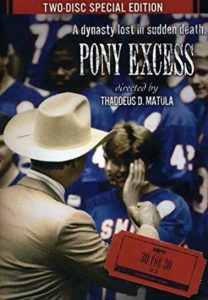 Pony Excess by Thaddeus D. Matula: The rise, fall, and rebirth of the SMU Mustangs football program, which received a 2-year “death penalty” for major infractions.
Pony Excess by Thaddeus D. Matula: The rise, fall, and rebirth of the SMU Mustangs football program, which received a 2-year “death penalty” for major infractions.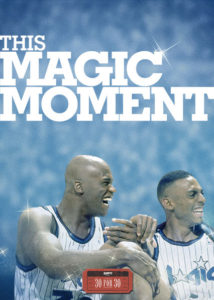 This Magic Moment by Erin Leyden and Gentry Kirby: Examining the Orlando Magic teams of the mid-1990s with Shaquille O’Neal and Penny Hardaway, who not only ruled the NBA, but pop culture as well.
This Magic Moment by Erin Leyden and Gentry Kirby: Examining the Orlando Magic teams of the mid-1990s with Shaquille O’Neal and Penny Hardaway, who not only ruled the NBA, but pop culture as well.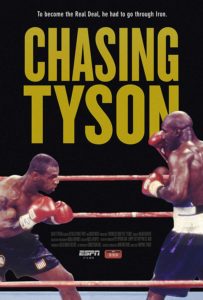 Chasing Tyson by Steven Cantor: A look at how Evander Holyfield spent years (1989-91 & 1995-96) trying to arrange his first fight with Mike Tyson in an effort to gain the respect he knew he could only gain by defeating Tyson in the ring.
Chasing Tyson by Steven Cantor: A look at how Evander Holyfield spent years (1989-91 & 1995-96) trying to arrange his first fight with Mike Tyson in an effort to gain the respect he knew he could only gain by defeating Tyson in the ring.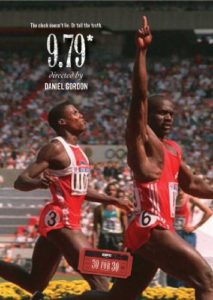 9.79* by Daniel Gordon: The 100-meter men’s final at the 1988 Seoul Games was the first to feature four runners under 10 seconds. Within 48 hours, gold medalist Ben Johnson had tested positive for anabolic steroids and scandal trumped thrilling as the way to describe the race. More than two decades later, others from that race have been proven as performance drug abusers, and “the dirtiest race in history” still haunts the eight men who took part. The film looks at whatbrought the men to the starting line and what happened to them since.
9.79* by Daniel Gordon: The 100-meter men’s final at the 1988 Seoul Games was the first to feature four runners under 10 seconds. Within 48 hours, gold medalist Ben Johnson had tested positive for anabolic steroids and scandal trumped thrilling as the way to describe the race. More than two decades later, others from that race have been proven as performance drug abusers, and “the dirtiest race in history” still haunts the eight men who took part. The film looks at whatbrought the men to the starting line and what happened to them since.
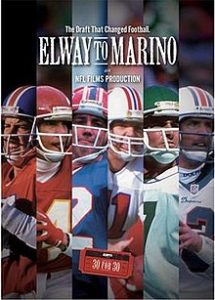 Elway to Marino by Ken Rodgers and NFL Films: A look at the six quarterbacks selected in the first round of the 1983 NFL Draft.
Elway to Marino by Ken Rodgers and NFL Films: A look at the six quarterbacks selected in the first round of the 1983 NFL Draft.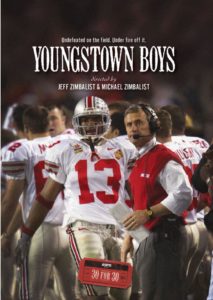 Youngstown Boys by Jeff Zimbalist and Michael Zimbalist: The stories of two Ohio State football figures connected with Youngstown, Ohio—running back Maurice Clarett, a native, and coach Jim Tressel, former head coach at Youngstown State University—exploring their football exploits at Ohio State, including a national championship in 2002, and their scandalous exits from the school.
Youngstown Boys by Jeff Zimbalist and Michael Zimbalist: The stories of two Ohio State football figures connected with Youngstown, Ohio—running back Maurice Clarett, a native, and coach Jim Tressel, former head coach at Youngstown State University—exploring their football exploits at Ohio State, including a national championship in 2002, and their scandalous exits from the school.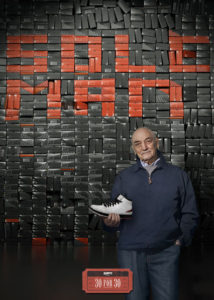 Sole Man by Jon Weinbach and Dan Marks: A profile of Sonny Vaccaro, who rose from steel town roots in Pennsylvania to become an influential force in both basketball and the athletic shoe industry.
Sole Man by Jon Weinbach and Dan Marks: A profile of Sonny Vaccaro, who rose from steel town roots in Pennsylvania to become an influential force in both basketball and the athletic shoe industry.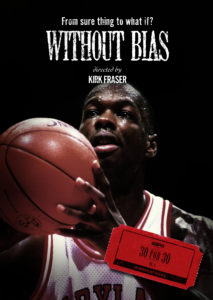 Without Bias by Kirk Fraser: The death of Len Bias from a cocaine-induced heart attack, two days after Boston selected him in the 1986 NBA Draft, and its impact on casual drug use, especially by the sports community.
Without Bias by Kirk Fraser: The death of Len Bias from a cocaine-induced heart attack, two days after Boston selected him in the 1986 NBA Draft, and its impact on casual drug use, especially by the sports community.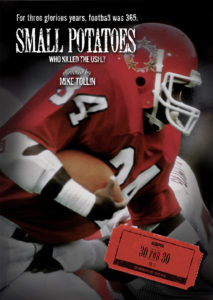 Small Potatoes: Who Killed the USFL? by Mike Tollin: Fresh interviews and archival footage track the life and demise of the United States Football League in the mid 1980s.
Small Potatoes: Who Killed the USFL? by Mike Tollin: Fresh interviews and archival footage track the life and demise of the United States Football League in the mid 1980s.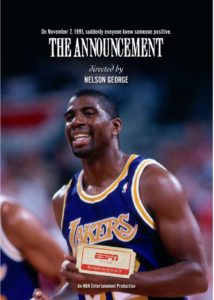 The Announcement by Nelson George: The events and aftermath of former Los Angeles Lakers player Magic Johnson announcing he tested positive for HIV to the world.
The Announcement by Nelson George: The events and aftermath of former Los Angeles Lakers player Magic Johnson announcing he tested positive for HIV to the world.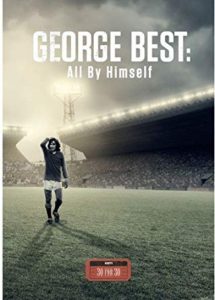 George Best: All by Himself by Daniel Gordon. George Best, Northern Ireland’s legendary star, remains one of the most naturally gifted soccer players ever. Best’s skill and exuberance lifted Manchester United, but his career was over before he turned 29, the result of his battle with alcoholism.
George Best: All by Himself by Daniel Gordon. George Best, Northern Ireland’s legendary star, remains one of the most naturally gifted soccer players ever. Best’s skill and exuberance lifted Manchester United, but his career was over before he turned 29, the result of his battle with alcoholism.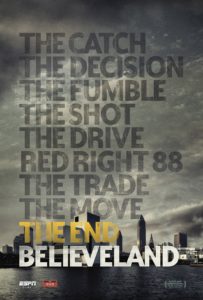 Believeland by Andy Billman: A look at the sports curse that befell Cleveland since the NFL’s Browns last brought a major pro sports championship to the Ohio city in 1964. The film debuted one month before LeBron James and the Cavaliers’ won the 2016 NBA Finals, after which the film was re-released with an updated ending on June 30, 2016.
Believeland by Andy Billman: A look at the sports curse that befell Cleveland since the NFL’s Browns last brought a major pro sports championship to the Ohio city in 1964. The film debuted one month before LeBron James and the Cavaliers’ won the 2016 NBA Finals, after which the film was re-released with an updated ending on June 30, 2016.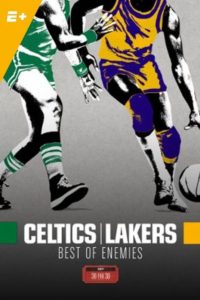 Celtics/Lakers: Best of Enemies by Jim Podhoretz. Three-part series exploring the Celtics–Lakers rivalry, focusing mainly on the 1980s era of Larry Bird and Magic Johnson but also examining the entire history of the NBA through the rivalry.
Celtics/Lakers: Best of Enemies by Jim Podhoretz. Three-part series exploring the Celtics–Lakers rivalry, focusing mainly on the 1980s era of Larry Bird and Magic Johnson but also examining the entire history of the NBA through the rivalry.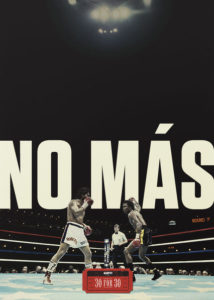 No Mas by Eric Drath: An inside look at the two boxing matches between Sugar Ray Leonard and Roberto Duran in the 1980s, with the help of boxing experts, family members and the two fighters themselves.
No Mas by Eric Drath: An inside look at the two boxing matches between Sugar Ray Leonard and Roberto Duran in the 1980s, with the help of boxing experts, family members and the two fighters themselves.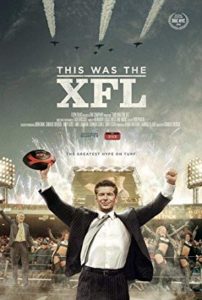 This Was the XFL by Charlie Ebersol: How two longtime friends, pro wrestling impresario Vince McMahon and NBC Sports president Dick Ebersol, teamed to form the XFL, a football league widely ridiculed during its brief run yet also appreciated as a forerunner of modern-day sports broadcasts.
This Was the XFL by Charlie Ebersol: How two longtime friends, pro wrestling impresario Vince McMahon and NBC Sports president Dick Ebersol, teamed to form the XFL, a football league widely ridiculed during its brief run yet also appreciated as a forerunner of modern-day sports broadcasts.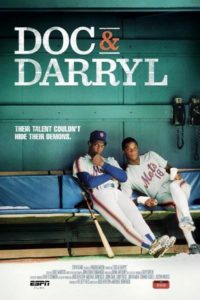 Doc and Daryl by Judd Apatow and Michael Bonfiglio: The connection between the lives and careers of former New York Mets Dwight “Doc” Gooden and Darryl Strawberry.
Doc and Daryl by Judd Apatow and Michael Bonfiglio: The connection between the lives and careers of former New York Mets Dwight “Doc” Gooden and Darryl Strawberry. Nature Boy by Rory Karpf. The life and times of professional wrestling legend Ric Flair.
Nature Boy by Rory Karpf. The life and times of professional wrestling legend Ric Flair.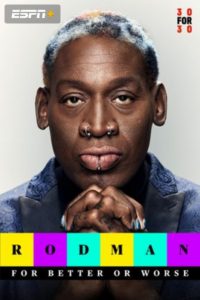 Rodman: For Better or Worse by Todd Kapostasy: The unfettered and definitive look at the life and career of Dennis Rodman.
Rodman: For Better or Worse by Todd Kapostasy: The unfettered and definitive look at the life and career of Dennis Rodman.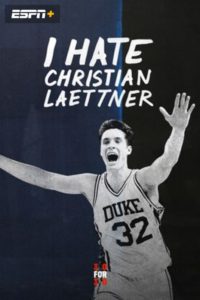 I Hate Christian Laettner by Rory Karpf: A look at the life and basketball career of Christian Laettner and the intense dislike some fans still harbor for the former Duke University and NBA star.
I Hate Christian Laettner by Rory Karpf: A look at the life and basketball career of Christian Laettner and the intense dislike some fans still harbor for the former Duke University and NBA star.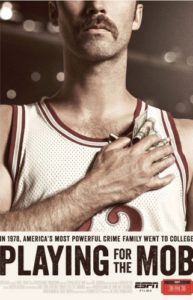 Playing for the Mob by Joe Lavine and Cayman Grant: How Mafia associate Henry Hill orchestrated a point-shaving scheme involving Boston College basketball. Narrated by Ray Liotta, who portrayed Hill in Goodfellas.
Playing for the Mob by Joe Lavine and Cayman Grant: How Mafia associate Henry Hill orchestrated a point-shaving scheme involving Boston College basketball. Narrated by Ray Liotta, who portrayed Hill in Goodfellas.
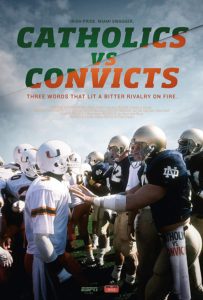 Catholics vs Convicts by Patrick Creadon: A look at the notorious 1988 Notre Dame–Miami football game and its personal and cultural impact.
Catholics vs Convicts by Patrick Creadon: A look at the notorious 1988 Notre Dame–Miami football game and its personal and cultural impact.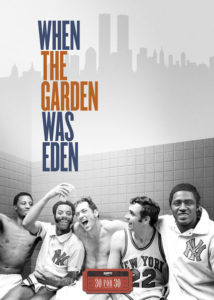 When The Garden Was Eden by Michael Rapaport: A look back at the New York Knicks’ championship teams of the 1970s.
When The Garden Was Eden by Michael Rapaport: A look back at the New York Knicks’ championship teams of the 1970s.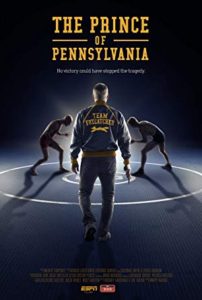 The Prince of Pennsylvania by Jesse Vile: An exploration of the turbulent relationship between Olympic wrestling brothers Mark and Dave Schultz and their eccentric benefactor, John du Pont, culminating in the murder of Dave by du Pont.
The Prince of Pennsylvania by Jesse Vile: An exploration of the turbulent relationship between Olympic wrestling brothers Mark and Dave Schultz and their eccentric benefactor, John du Pont, culminating in the murder of Dave by du Pont.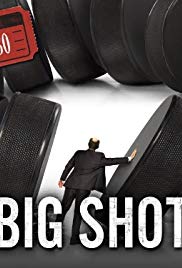 Big Shot by Kevin Connolly: The story of how young businessman John Spano struck a deal to purchase the New York Islanders in 1996, only to be later revealed as a fraud and being near financial insolvency.
Big Shot by Kevin Connolly: The story of how young businessman John Spano struck a deal to purchase the New York Islanders in 1996, only to be later revealed as a fraud and being near financial insolvency.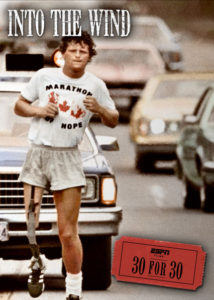 Into the Wind by Steve Nash and Ezra Holland: Terry Fox’s attempt to run across Canada in support of fundraising for cancer research captures the attention of his fellow Canadians and the world.
Into the Wind by Steve Nash and Ezra Holland: Terry Fox’s attempt to run across Canada in support of fundraising for cancer research captures the attention of his fellow Canadians and the world.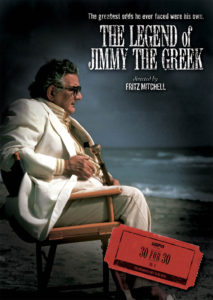 The Legend of Jimmy the Greek by Fritz Mitchell: The life of Jimmy “the Greek” Snyder, from his career as a Las Vegas bookmaker to his tenure on The NFL Today, from which he was fired in 1988.
The Legend of Jimmy the Greek by Fritz Mitchell: The life of Jimmy “the Greek” Snyder, from his career as a Las Vegas bookmaker to his tenure on The NFL Today, from which he was fired in 1988.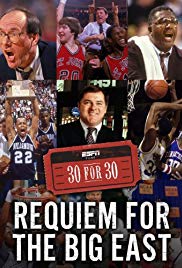 Requiem for the Big East by Ezra Edelman: A recollection of the original Big East Conference, from its simple beginnings and regional rivalries to its national prominence as one of the most successful college basketball leagues, and how it ended up fighting for its survival in the 2010s during conference realignment.
Requiem for the Big East by Ezra Edelman: A recollection of the original Big East Conference, from its simple beginnings and regional rivalries to its national prominence as one of the most successful college basketball leagues, and how it ended up fighting for its survival in the 2010s during conference realignment.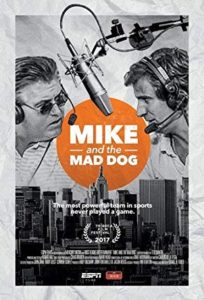 Mike and the Mad Dog by Daniel H. Forer. The careers of Mike Francesa and Chris Russo, their stormy 19-year partnership on New York City radio; and their influence on the Big Apple radio audience and sports talk radio in general.
Mike and the Mad Dog by Daniel H. Forer. The careers of Mike Francesa and Chris Russo, their stormy 19-year partnership on New York City radio; and their influence on the Big Apple radio audience and sports talk radio in general.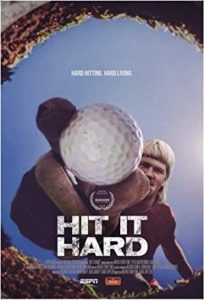 Hit it Hard by David Terry Fine and Gabe Spitzer: A look at John Daly’s rise from obscurity to two major championship wins and fall back to mediocrity.
Hit it Hard by David Terry Fine and Gabe Spitzer: A look at John Daly’s rise from obscurity to two major championship wins and fall back to mediocrity.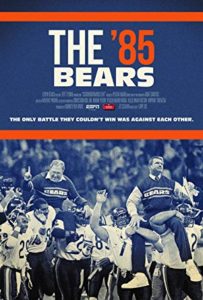 The ’85 Bears by Jason Hehir: A 30-year retrospective on the 1985 Chicago Bears, from how they were assembled to their swaggering, dominant run to Super Bowl victory.
The ’85 Bears by Jason Hehir: A 30-year retrospective on the 1985 Chicago Bears, from how they were assembled to their swaggering, dominant run to Super Bowl victory.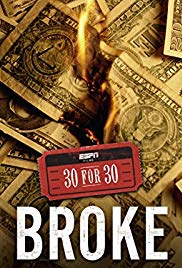 Broke by Billy Corben: Exploring the road to fortune in sports and the eventual detours to bankruptcy, as experienced by top athletes including Bernie Kosar, Andre Rison, Keith McCants, and Cliff Floyd.
Broke by Billy Corben: Exploring the road to fortune in sports and the eventual detours to bankruptcy, as experienced by top athletes including Bernie Kosar, Andre Rison, Keith McCants, and Cliff Floyd.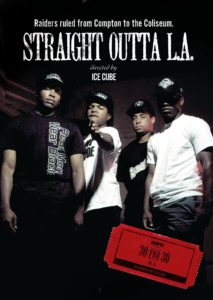 Straight Outta L.A. by Ice Cube: The relationship between the Raiders and theminority fan base in Los Angeles during the team’s 13 seasons in L.A. (1982-1994).
Straight Outta L.A. by Ice Cube: The relationship between the Raiders and theminority fan base in Los Angeles during the team’s 13 seasons in L.A. (1982-1994).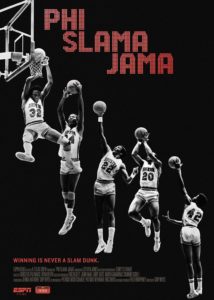 Phi Slama Jama by Chip Reeves. A profile of the iconic Houston Cougars men’s basketball teams of the 1980s, fronted by Hakeem Olajuwon and Clyde Drexler, whose explosive play and highlight-making slam dunks earned the team the nickname Phi Slama Jama.
Phi Slama Jama by Chip Reeves. A profile of the iconic Houston Cougars men’s basketball teams of the 1980s, fronted by Hakeem Olajuwon and Clyde Drexler, whose explosive play and highlight-making slam dunks earned the team the nickname Phi Slama Jama.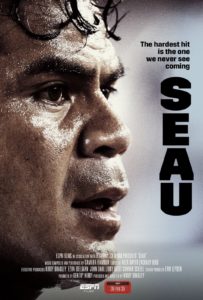 Seau by Kirby Bradley: The life of NFL legend Junior Seau, from his upbringing in a Samoan immigrant family, through his path to NFL superstardom and status as a league icon, ending in his untimely death from an seemingly inexplicable suicide in 2012.
Seau by Kirby Bradley: The life of NFL legend Junior Seau, from his upbringing in a Samoan immigrant family, through his path to NFL superstardom and status as a league icon, ending in his untimely death from an seemingly inexplicable suicide in 2012. Hawaiian: The Legend of Eddie Aikau by Sam George: Chronicling the life of big wave surfer and lifeguard Eddie Aikau, whose tragic death served as inspiration to an entire spiritual movement.
Hawaiian: The Legend of Eddie Aikau by Sam George: Chronicling the life of big wave surfer and lifeguard Eddie Aikau, whose tragic death served as inspiration to an entire spiritual movement.
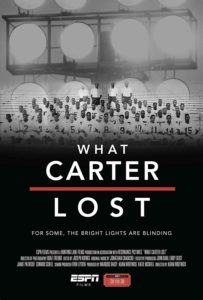 What Carter Lost by Adam Hootnick. In any other year, the 1988 team from Dallas’ Carter High School would have gone down as one of the greatest in Texas football history, featuring 28 players who received college scholarship offers, eight of whom would eventually play professional football. Fighting off racial prejudice and a grades controversy — not to mention the team that would overshadow them in book and film (Odessa Permian) — Carter would claim the state title, only to be rocked to their core when six of their players were involved in an armed robbery that changed the community’s reputation to this day.
What Carter Lost by Adam Hootnick. In any other year, the 1988 team from Dallas’ Carter High School would have gone down as one of the greatest in Texas football history, featuring 28 players who received college scholarship offers, eight of whom would eventually play professional football. Fighting off racial prejudice and a grades controversy — not to mention the team that would overshadow them in book and film (Odessa Permian) — Carter would claim the state title, only to be rocked to their core when six of their players were involved in an armed robbery that changed the community’s reputation to this day.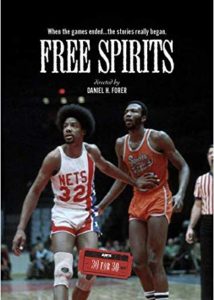 Free Spirits by Daniel H. Forer: The story of the colorful figures who made up the American Basketball Association’s Spirits of St. Louis, and how Spirits owners Daniel and Ozzie Silna, with their team about to be left out in the ABA’s merger with the NBA, managed to negotiate a deal that has allowed the brothers’ involvement in pro basketball to continue to exist in a most unusual fashion.
Free Spirits by Daniel H. Forer: The story of the colorful figures who made up the American Basketball Association’s Spirits of St. Louis, and how Spirits owners Daniel and Ozzie Silna, with their team about to be left out in the ABA’s merger with the NBA, managed to negotiate a deal that has allowed the brothers’ involvement in pro basketball to continue to exist in a most unusual fashion. The Dotted Line by Morgan Spurlock: Sports agents Peter Greenberg and Eugene Lee are profiled with their clients Johan Santana, Jacquian Williams and Robert Hughes.
The Dotted Line by Morgan Spurlock: Sports agents Peter Greenberg and Eugene Lee are profiled with their clients Johan Santana, Jacquian Williams and Robert Hughes. The Real Rocky by Jeff Feuerzeig: A profile of Chuck Wepner, the original inspiration for Sylvester Stallone’s Rocky Balboa. Wepner was left out of the “Rocky” glory, and his career took turn after strange turn as he worked to stay in the spotlight: he went on to fight Andre the Giant as “The Assassin” and twice boxed a 900 pound bear.
The Real Rocky by Jeff Feuerzeig: A profile of Chuck Wepner, the original inspiration for Sylvester Stallone’s Rocky Balboa. Wepner was left out of the “Rocky” glory, and his career took turn after strange turn as he worked to stay in the spotlight: he went on to fight Andre the Giant as “The Assassin” and twice boxed a 900 pound bear.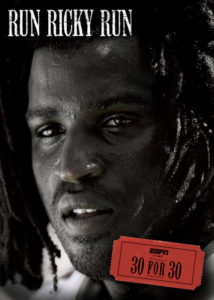 Run Ricky Run by Sean Pamphilon and Royce Toni: A profile of Ricky Williams focuses on his brief 2004 departure from the NFL, when he sought self-redemption amidst media criticism and fresh rumors of marijuana use.
Run Ricky Run by Sean Pamphilon and Royce Toni: A profile of Ricky Williams focuses on his brief 2004 departure from the NFL, when he sought self-redemption amidst media criticism and fresh rumors of marijuana use.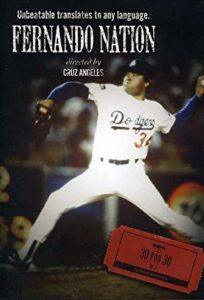 Fernando Nation by Cruz Angeles: The euphoria created by Fernando Valenzuela’s 1981 arrival with the Los Angeles Dodgers.
Fernando Nation by Cruz Angeles: The euphoria created by Fernando Valenzuela’s 1981 arrival with the Los Angeles Dodgers.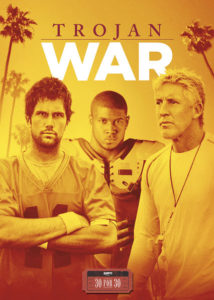 Trojan War by Aaron Rahsaan Thomas: A profile of the rise and fall of USC Trojans football during Pete Carroll’s coaching tenure in the 2000s.
Trojan War by Aaron Rahsaan Thomas: A profile of the rise and fall of USC Trojans football during Pete Carroll’s coaching tenure in the 2000s.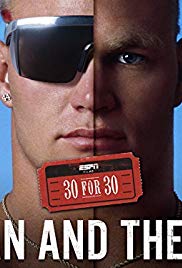 Brian and The Boz by Thaddeus D. Matula: The rise, fall, and post-football life of Brian Bosworth.
Brian and The Boz by Thaddeus D. Matula: The rise, fall, and post-football life of Brian Bosworth. The Day The Series Stopped by Ryan Fleck: A 25-year retrospective of the Loma Prieta earthquake, which struck just before the scheduled start of Game 3 of the 1989 World Series.
The Day The Series Stopped by Ryan Fleck: A 25-year retrospective of the Loma Prieta earthquake, which struck just before the scheduled start of Game 3 of the 1989 World Series.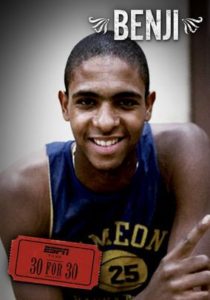 Benji by Coodie and Chike: In 1984, 17-year-old Ben Wilson was a symbol of everything promising about Chicago: a beloved, sweet-natured youngster from the city’s fabled South Side, and America’s most talented basketball prospect. His senseless murder the day before his senior season sent ripples through Chicago and the nation.
Benji by Coodie and Chike: In 1984, 17-year-old Ben Wilson was a symbol of everything promising about Chicago: a beloved, sweet-natured youngster from the city’s fabled South Side, and America’s most talented basketball prospect. His senseless murder the day before his senior season sent ripples through Chicago and the nation.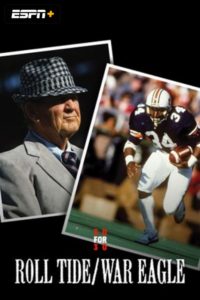 Roll Tide/War Eagle by Martin Khodabakhshian: The continuing rivalry between Auburn University and the University of Alabama. This is the story of the history between the two programs, the bad blood between its fans and how this intense rivalry came to a pinnacle, just when they ended up needing each other most.
Roll Tide/War Eagle by Martin Khodabakhshian: The continuing rivalry between Auburn University and the University of Alabama. This is the story of the history between the two programs, the bad blood between its fans and how this intense rivalry came to a pinnacle, just when they ended up needing each other most.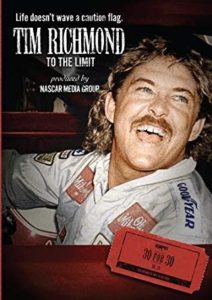 Tim Richmond: To the Limit by NASCAR Media Group and Rory Karpf: The career of NASCAR driver Tim Richmond, his flamboyant lifestyle, and his 1989 death from AIDS.
Tim Richmond: To the Limit by NASCAR Media Group and Rory Karpf: The career of NASCAR driver Tim Richmond, his flamboyant lifestyle, and his 1989 death from AIDS.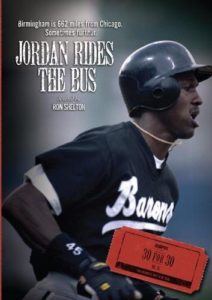 Jordan Rides the Bus by Ron Shelton: Motivated by the dream his late father had for him, Michael Jordan retires from basketball and has a brief career in minor league baseball.
Jordan Rides the Bus by Ron Shelton: Motivated by the dream his late father had for him, Michael Jordan retires from basketball and has a brief career in minor league baseball.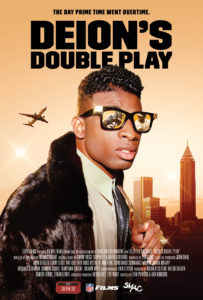 Deion’s Double Play by Ken Rodgers and Erik Powers: A look at Pro Football Hall of Famer Deion Sanders, focusing especially on a 24-hour span in 1992 when he sandwiched an NFL game between a pair of Major League Baseball postseason games in cities separated by 1,000 miles.
Deion’s Double Play by Ken Rodgers and Erik Powers: A look at Pro Football Hall of Famer Deion Sanders, focusing especially on a 24-hour span in 1992 when he sandwiched an NFL game between a pair of Major League Baseball postseason games in cities separated by 1,000 miles.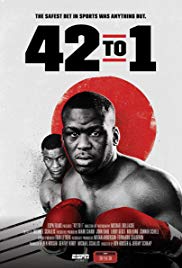 42 to 1 by Ben Houser and Jeremy Schaap: A chronicle of Buster Douglas’ shocking knockout of the then-undefeated Mike Tyson at the Tokyo Dome on February 11, 1990.
42 to 1 by Ben Houser and Jeremy Schaap: A chronicle of Buster Douglas’ shocking knockout of the then-undefeated Mike Tyson at the Tokyo Dome on February 11, 1990.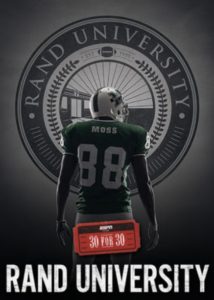 Rand University by Marquis Daisy: An exploration of former NFL receiver Randy Moss and his humble (and humbling) origins in Rand, West Virginia.
Rand University by Marquis Daisy: An exploration of former NFL receiver Randy Moss and his humble (and humbling) origins in Rand, West Virginia.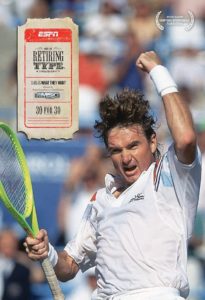 This Is What They Want by Brian Koppelman and David Levien: The story of a 39-year-old Jimmy Connors and his unexpected and extraordinary underdog run at the 1991 U.S. Open, where he played as a wildcard entrant and reached the semifinals of the men’s singles draw.
This Is What They Want by Brian Koppelman and David Levien: The story of a 39-year-old Jimmy Connors and his unexpected and extraordinary underdog run at the 1991 U.S. Open, where he played as a wildcard entrant and reached the semifinals of the men’s singles draw.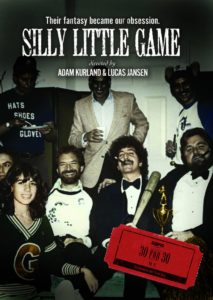 Silly Little Game by Adam Kurland and Lucas Jansen: Meeting at New York City’s La Rotisserie Francaise, a group of writers and academics develop Rotisserie Fantasy baseball, only to see it take off in popularity and leave them behind.
Silly Little Game by Adam Kurland and Lucas Jansen: Meeting at New York City’s La Rotisserie Francaise, a group of writers and academics develop Rotisserie Fantasy baseball, only to see it take off in popularity and leave them behind.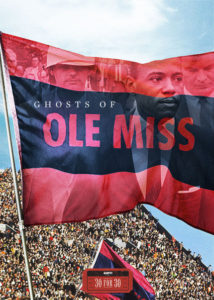 Ghosts of Ole Miss by Fritz Mitchell: In 1962, the University of Mississippi campus erupted in violence over integration and swelled with pride over an unbeaten football team. Mississippi native Wright Thompson explores the tumultuous events that continue to shape the state 50 years later.
Ghosts of Ole Miss by Fritz Mitchell: In 1962, the University of Mississippi campus erupted in violence over integration and swelled with pride over an unbeaten football team. Mississippi native Wright Thompson explores the tumultuous events that continue to shape the state 50 years later. Bernie and Ernie by Jason Hehir: A profile of Bernard King and Ernie Grunfeld, their decades-long friendship, and their on-court partnership on the University of Tennessee basketball team, better known as the “Ernie and Bernie Show”.
Bernie and Ernie by Jason Hehir: A profile of Bernard King and Ernie Grunfeld, their decades-long friendship, and their on-court partnership on the University of Tennessee basketball team, better known as the “Ernie and Bernie Show”.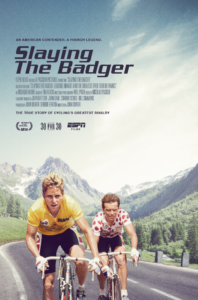 Slaying the Badger by John Dower: Examining the competitive nature that Greg LeMond and Bernard Hinault exhibited in the 1986 Tour de France; a film based on the book with the same name, written by Richard Moore.
Slaying the Badger by John Dower: Examining the competitive nature that Greg LeMond and Bernard Hinault exhibited in the 1986 Tour de France; a film based on the book with the same name, written by Richard Moore.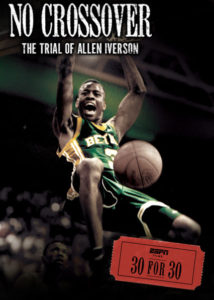 No Crossover: The Trial of Allen Iverson by Steve James: The 1993 trial of Hampton, Virginia, high-school athlete Allen Iverson, convicted for his role in a racially-tinged melee, and its impact on both the community and on Iverson’s life.
No Crossover: The Trial of Allen Iverson by Steve James: The 1993 trial of Hampton, Virginia, high-school athlete Allen Iverson, convicted for his role in a racially-tinged melee, and its impact on both the community and on Iverson’s life.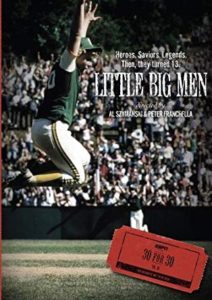 Little Big Men by Al Szymanski: The Kirkland National Little League team’s success at the 1982 Little League World Series (where they pulled off one of the biggest upsets in the event’s history in the title game) and its after-effects.
Little Big Men by Al Szymanski: The Kirkland National Little League team’s success at the 1982 Little League World Series (where they pulled off one of the biggest upsets in the event’s history in the title game) and its after-effects.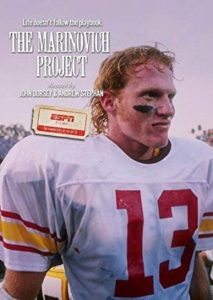 The Marinovich Project by Andrew Stephan and John Dorsey: The rise and fall of former USC and NFL quarterback Todd Marinovich is chronicled. The film focuses primarily on the complex relationship between Marinovich and his father.
The Marinovich Project by Andrew Stephan and John Dorsey: The rise and fall of former USC and NFL quarterback Todd Marinovich is chronicled. The film focuses primarily on the complex relationship between Marinovich and his father.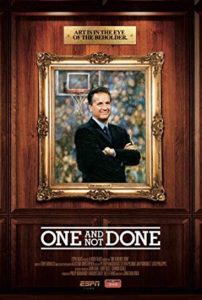 One and Not Done by Jonathan Hock: The life and career of John Calipari, one of the most polarizing figures in modern college basketball, weaving his story around that of his 2015–16 Kentucky team.
One and Not Done by Jonathan Hock: The life and career of John Calipari, one of the most polarizing figures in modern college basketball, weaving his story around that of his 2015–16 Kentucky team.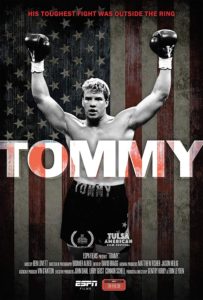 Tommy by Gentry Kirby and Erin Leyden. The unlikely rise and sudden fall of boxer Tommy Morrison.
Tommy by Gentry Kirby and Erin Leyden. The unlikely rise and sudden fall of boxer Tommy Morrison.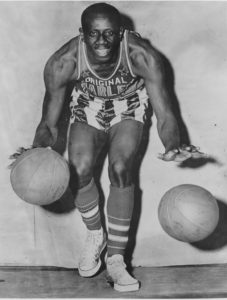 Goose by Kevin Shaw: The life of Reece “Goose” Tatum who played in Negro League baseball and was an original member of the legendary Harlem Globetrotters.
Goose by Kevin Shaw: The life of Reece “Goose” Tatum who played in Negro League baseball and was an original member of the legendary Harlem Globetrotters.
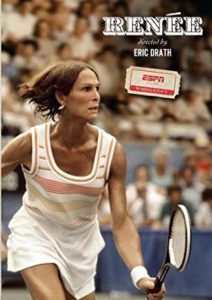 Renée by Eric Drath: The life of transsexual athlete Renée Richards, who shocked the world with her entry into the 1977 U.S. Open.
Renée by Eric Drath: The life of transsexual athlete Renée Richards, who shocked the world with her entry into the 1977 U.S. Open.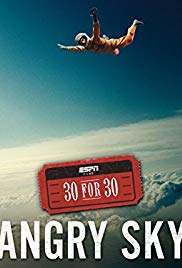 Angry Sky by Jeff Tremaine: The story of Nick Piantanida, a New Jersey pet store owner and truck driver whose love of parachuting and skydiving puts him on a quest to break the record for the highest recorded parachute jump.
Angry Sky by Jeff Tremaine: The story of Nick Piantanida, a New Jersey pet store owner and truck driver whose love of parachuting and skydiving puts him on a quest to break the record for the highest recorded parachute jump. The Gospel According to Mac by Jim Podhoretz: A look at how Bill McCartney mixed two religions — college football and evangelical Christianity — while serving as head coach of the Colorado Buffaloes in the 1990s, a tenure that included a national championship.
The Gospel According to Mac by Jim Podhoretz: A look at how Bill McCartney mixed two religions — college football and evangelical Christianity — while serving as head coach of the Colorado Buffaloes in the 1990s, a tenure that included a national championship.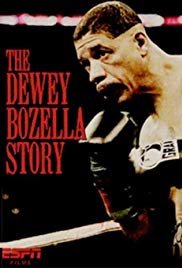 26 Years: The Dewey Bozella Story by Jose Morales: The life of Dewey Bozella in his 26 years behind bars, where he found strength and purpose through boxing, becoming the light heavyweight champion of Sing Sing Prison. He made it a goal to be proven innocent and box professionally once he was released.
26 Years: The Dewey Bozella Story by Jose Morales: The life of Dewey Bozella in his 26 years behind bars, where he found strength and purpose through boxing, becoming the light heavyweight champion of Sing Sing Prison. He made it a goal to be proven innocent and box professionally once he was released.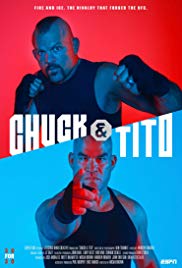 Chuck & Tito by Micah Brown: Chronicles the hot and cold relationship between MMA fighters Chuck Liddell and Tito Ortiz—from the very start of the UFC, through its rise in popularity, to present day.
Chuck & Tito by Micah Brown: Chronicles the hot and cold relationship between MMA fighters Chuck Liddell and Tito Ortiz—from the very start of the UFC, through its rise in popularity, to present day.
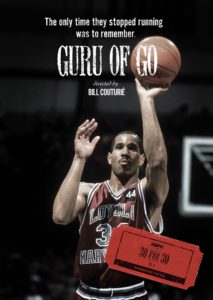 Guru of Go by Bill Couturié: Paul Westhead’s coaching tenure at Loyola Marymount University (1985-1990) features his high-scoring run-and-gun offense and players such as Bo Kimble and Hank Gathers.
Guru of Go by Bill Couturié: Paul Westhead’s coaching tenure at Loyola Marymount University (1985-1990) features his high-scoring run-and-gun offense and players such as Bo Kimble and Hank Gathers.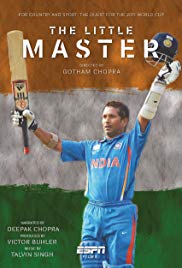 The Little Master by Gotham Chopra: The life and impact of Indian cricket legend Sachin Tendulkar, set against the backdrop of the 2011 Cricket World Cup, Tendulkar’s final attempt to lead his country to one-day cricket’s ultimate prize. Narrated by Deepak Chopra, the director’s father.
The Little Master by Gotham Chopra: The life and impact of Indian cricket legend Sachin Tendulkar, set against the backdrop of the 2011 Cricket World Cup, Tendulkar’s final attempt to lead his country to one-day cricket’s ultimate prize. Narrated by Deepak Chopra, the director’s father. Year of the Scab by John Dorsey. During the 1987 players’ strike, the Washington Redskins field a roster of replacement players that goes 3-0 and helps pave the way for the Redskins’ Super Bowl victory. Thirty years on, those players bear the stigma of being dismissed as “scabs” by fans in general and Redskins management in particular.
Year of the Scab by John Dorsey. During the 1987 players’ strike, the Washington Redskins field a roster of replacement players that goes 3-0 and helps pave the way for the Redskins’ Super Bowl victory. Thirty years on, those players bear the stigma of being dismissed as “scabs” by fans in general and Redskins management in particular.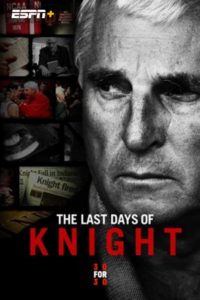 The Last Days of Knight by Robert Abbott: The saga surrounding Indiana University’s firing of men’s basketball coach Bob Knight in 2000.
The Last Days of Knight by Robert Abbott: The saga surrounding Indiana University’s firing of men’s basketball coach Bob Knight in 2000.
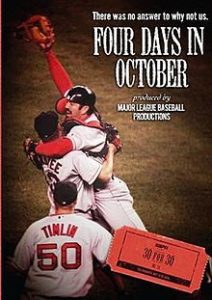 Four Days In October by Major League Baseball Productions: The remarkable comeback of the Boston Red Sox against the New York Yankees in the 2004 ALCS.
Four Days In October by Major League Baseball Productions: The remarkable comeback of the Boston Red Sox against the New York Yankees in the 2004 ALCS.
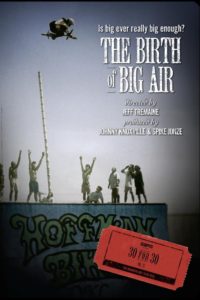 The Birth of Big Air by Jeff Tremaine, Johnny Knoxville, and Spike Jonze: The life of Mat Hoffman and his 25 year career of advancing BMX riding, both creatively and promotionally.
The Birth of Big Air by Jeff Tremaine, Johnny Knoxville, and Spike Jonze: The life of Mat Hoffman and his 25 year career of advancing BMX riding, both creatively and promotionally.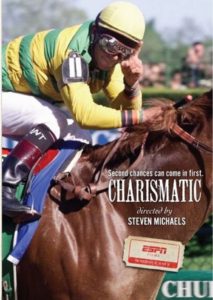 Charismatic By Steven Michaels, Joel Surnow, and Jonathan Koch: The run of Charismatic and its jockey, Chris Antley, at the 1999 Triple Crown.
Charismatic By Steven Michaels, Joel Surnow, and Jonathan Koch: The run of Charismatic and its jockey, Chris Antley, at the 1999 Triple Crown.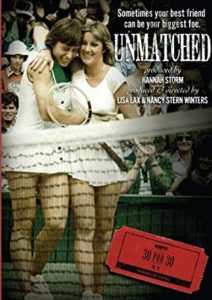 Unmatched by Lisa Lax and Nancy Stern, with Hannah Storm: A look at the rivalry and friendship between tennis legends Chris Evert and Martina Navratilova.
Unmatched by Lisa Lax and Nancy Stern, with Hannah Storm: A look at the rivalry and friendship between tennis legends Chris Evert and Martina Navratilova.
*Summaries used courtesy of Wikipedia. Not counting shorts, podcasts, or Soccer Stories spinoff.

This is probably the worst 30 for 30 ranking I’ve ever seen. 2 and 4 are snoozefests, and I consider The Band That Wouldn’t Die to be one of the worst/the worst one, and you have it 14th…wow, just wow…
I regret to inform you that any “30 for 30” ranking that does not have the stupid hot dog eating contest and Joey Chestnut listed dead last is automatically disqualified. You are no longer allowed to watch ESPN.
Cool well it didn’t make the list at all. Is that more objectionable than putting it at #100?